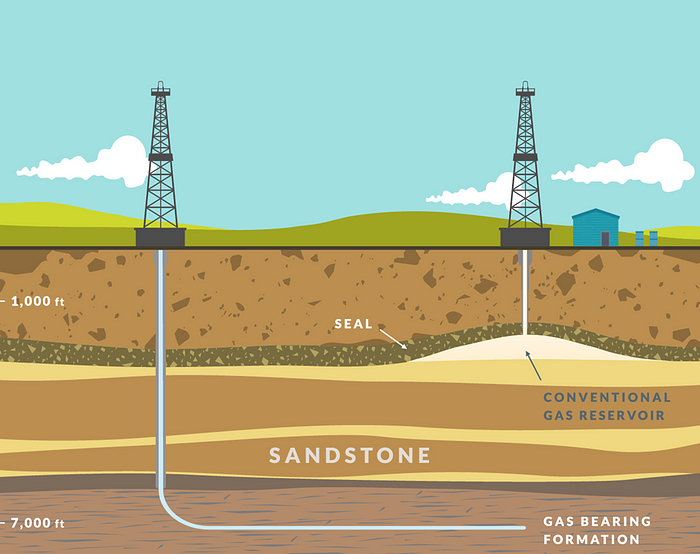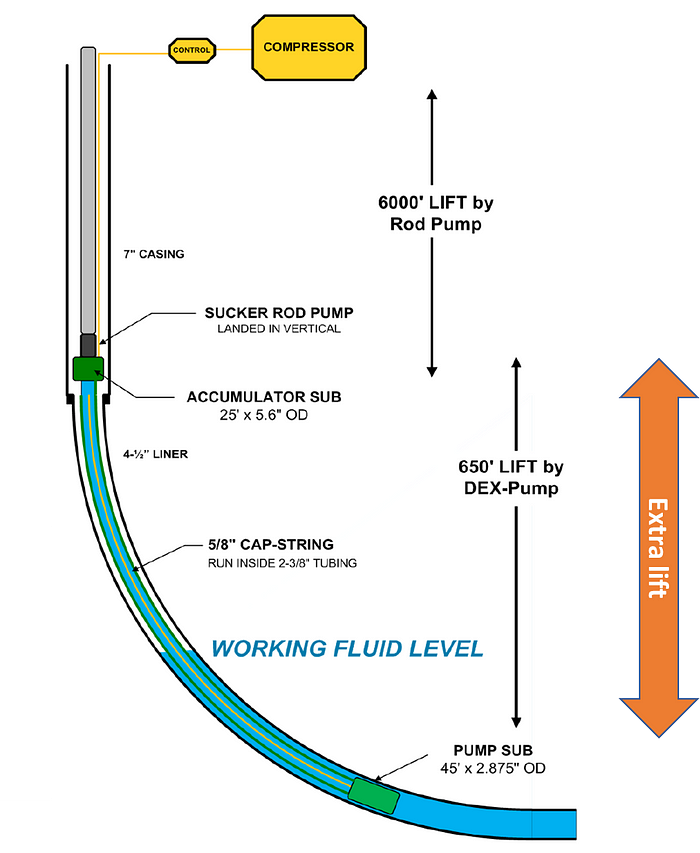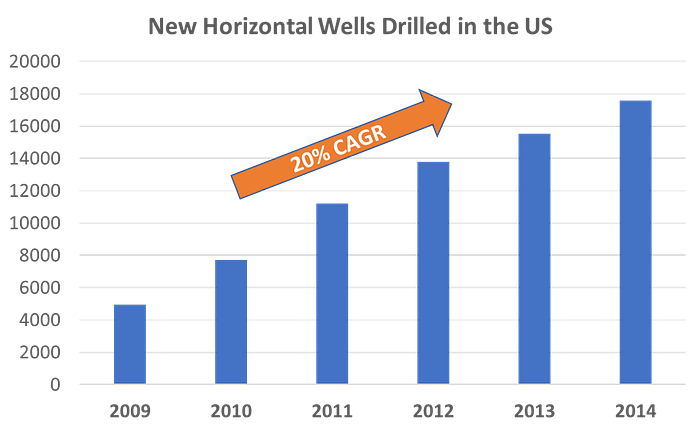Cortado Ventures invests in technologies that impact how we work, heal, move and power modern life. In the middle of the country, we see the technology revolution transforming hard-to-shift legacy sectors through software, AI and hard tech. Our recent investment in Dex Pump reflects our conviction that hard tech is critical to energy infrastructure, retooling industrial know-how to optimize and extend the life of existing assets and decrease the environmental footprint.

Horizontal Drilling was made popular in the early 2000s and enabled the United States to reclaim its throne as the number one global producer of oil. But what exactly is horizontal drilling, and how does it differ from conventional wells? The difference is geometry — vertical versus horizontal — but that difference is critical. Horizontal or directional drilling was an innovation on conventional drilling that enables more contact with the reservoir and therefore more oil production. Instead of wellbores contacting tens to hundreds of feet of rock formation, they can now reach thousands of feet to miles of these layers. It also helps reduce the footprint of drilling by utilizing an original well location and going outward rather than drilling multiple vertical wells. In addition, it helps increase the revenue potential for wells by opening up a much greater area to draw from. The process is certainly expensive and time intensive. However, as these wells may operate for decades and produce millions in revenue, they’re most often worth the expense.

What happens as these wells mature? Horizontal wells by nature often stop producing enough oil to be worthwhile, though there still remains a significant volume of oil sitting just out of reach. This has often led to premature abandonment of these wells and moving elsewhere to drill more. That’s where Dex Pump comes in. Dex Pump has developed a pump and process that allows the extraction of substantial amounts of additional oil and sustained economic viability by getting deeper into the curved section of the well. That is, where the vertical well curves into a horizontal well. This helps speed up the flow and productivity of the well drastically, and to capture more reserves from the same wellbore. As founder and inventor Vic McGowen put it, “It’s the same physical concept of putting a sump pump deeper into a reservoir to achieve more and faster drawdown of fluids.” The company is exploring various business models, including the potential leasing of Dex Pumps as opposed to a sales model, enabling greater flexibility.

This brings innumerable benefits to many stakeholders, from the mineral rights owners to the oil companies themselves to the environment.
- For the mineral rights owners, the additional proceeds are tremendous compared to what would have otherwise been stranded.
- For energy companies it not only captures more value but allows them to avoid drilling elsewhere, which comes at a great cost of research, time, and expense. It also is better for the environment with reduced footprints — an increasingly important factor for energy companies.
- The service model rather than an equipment sale model is also a large sunk-cost saver for these companies.
- The Dex pump integrates with existing rod lift equipment, so field personnel will not have to train with and operate new equipment.
- For the environment, it means less wells are being drilled, less wasted reserves, and less land needs to be utilized for development.
In the US, there is approximately $80B worth of orphaned value from unrecoverable oil and gas in these maturing horizontal wells.[1] With so much untapped value, why weren’t others addressing this? The problem is still new. These horizontal wells became ubiquitous only in the last decade, and are now entering maturity. Others have tried but required costly and technically uncertain “rip and replace” operations, unfeasible for already marginal wells. This opportunity presented itself to founder Vic McGowen about four years ago when he began developing his first prototype.

The Dex Pump’s technology has garnered a great deal of interest from stakeholders and with beta testing in place, is already a promising solution to a new problem. Cortado partner experience in developing energy assets is especially relevant here: Dex’s pilot is running in the very field that I developed as an operator. Dex is an example of innovation in a legacy industry driving significant ROI while improving aging infrastructure — an important and necessary step in the energy transition. Dex Pump with Cortado’s partnership is building on Oklahoma’s energy roots as we adapt our know-how to a changing landscape.
